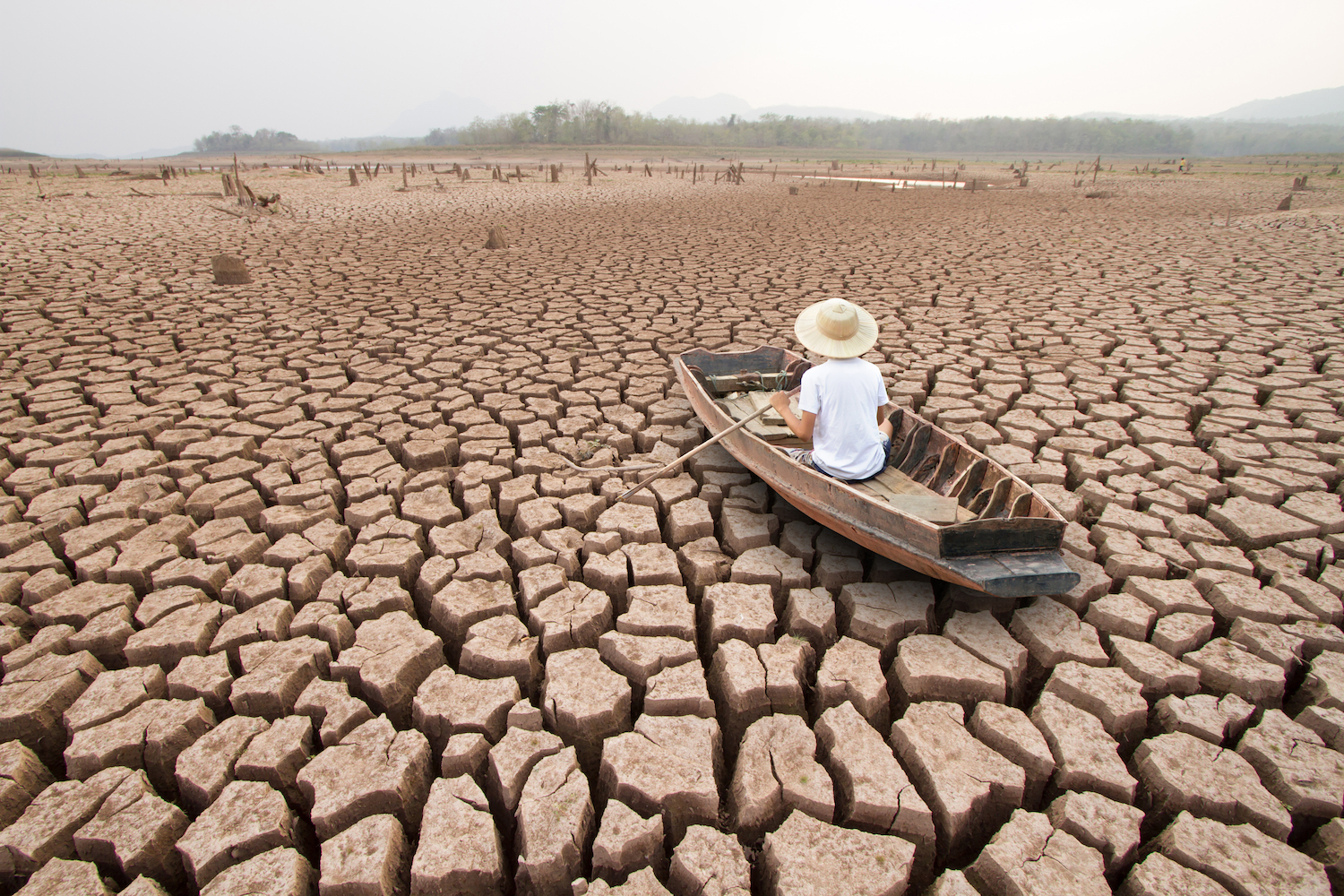
Has the Earth Ever Been This Hot Before?

Would you ever go on vacation to the North Pole? Unless you like subzero temperatures and Nordic-ski treks, probably not. But if you lived 56 million years ago, you might answer differently. Back then, you would have enjoyed balmy temperatures and a lush green landscape (although you would have had to watch out for crocodiles). That's because the world was in the middle of an extreme period of global warming called the Paleo-Eocene Thermal Maximum, when the Earth was so hot that even the poles reached nearly tropical temperatures.
But was the planet ever as hot as it is today, when every month the globe seems to be breaking one high-temperature record after another?
It turns out that the Earth has gone through periods of extreme warming more than once. The poles have frozen and thawed and frozen again. Now, the Earth is heating up again. Even so, today's climate change is a different beast, and it's clearly not just part of some larger natural cycle, Stuart Sutherland, a paleontologist at the University of British Columbia, told Live Science. [How Often Do Ice Ages Happen?]
Earth's climate does naturally oscillate — over tens of thousands of years, its rotations around the sun slowly change, leading to variations in everything from seasons to sunlight. Partially as a result of these oscillations, Earth goes through glacial periods (better known as ice ages) and warmer interglacial periods.
But to create a massive warming event, like the Paleo-Eocene Thermal Maximum, it takes more than a change in the tilt of Earth's axis, or the shape of its path around the sun. Extreme warming events always involve the same invisible culprit, one we're all too familiar with today: a massive dose of carbon dioxide, or CO2.
This greenhouse gas was almost certainly responsible for the Paleo-Eocene Thermal Maximum. But how did CO2 concentrations get so high without humans around? Scientists aren't absolutely sure, said Sébastien Castelltort, a geologist at the University of Geneva. Their best guess is that volcanoes spewed carbon dioxide into the atmosphere, trapping heat, and perhaps melting frozen pockets of methane, a greenhouse gas more potent than CO2 that had been long sequestered under the ocean. Just because extreme warming events spurred by greenhouse gases have happened before, doesn't mean these events are harmless. Take, for instance, the Permian-Triassic extinction event, which struck a few million years before dinosaurs arose on the planet. If the word "extinction" isn't enough of a clue, here's a spoiler: it was an absolute disaster for Earth and everything on it.
This warming event, which occurred 252 million years ago, was so extreme that Sutherland calls it the "poster child for the runaway greenhouse effect." This warming event, which was also caused by volcanic activity (in this case, the eruption of a volcanic region called the Siberian Traps), triggered climate chaos and widespread death.
Get the world’s most fascinating discoveries delivered straight to your inbox.
"Imagine extreme drought, plants dying, the Saharah spreading throughout the continent," Sutherland told Live Science.
Temperatures rose 18 degrees Fahrenheit (10 degrees Celsius). (This is compared with the 2.1 F (1.2 C) rise in temperature we've seen since humans began burning fossil fuels). Around 95% of marine life and 70% of terrestrial life went extinct.
"It was just too hot and unpleasant for creatures to live," Sutherland said.
It's uncertain how high greenhouse gas concentrations were during the Permian-Triassic extinction event, but they likely were far higher than they are today. Some models suggest they grew as high as 3,500 parts per million (ppm). (For perspective, today's carbon dioxide concentrations hover a little over 400 ppm — but that's still considered high).
But it's the rate of change in CO2 concentrations that makes today's situation so unprecedented. During the Permian Triassic extinction event, it took thousands of years for temperatures to rise as high as they did — according to some studies, as many as 150,000 years. During the Paleo-Eocene Thermal Maximum, considered an extremely rapid case of warming, temperatures took 10,000 to 20,000 years to reach their height.
Today's warming has taken only 150 years.
That is the biggest difference between today's climate change and past climatic highs. It's also what makes the consequences of current climate change so difficult to predict, Castelltort said. The concern isn't just "but the planet is warming." The concern is that we don't know how rapid is too rapid for life to adjust, he said. Based on past warming events, no experts could possibly say that the current rate of warming won't have dramatic consequences, he said. "We just don't know how dramatic," he added.
- What is a Carbon Sink?
- What If a Giant Asteroid Had Not Wiped Out the Dinosaurs?
- Why Weather Affects Climate Change Belief
Originally published on Live Science.

Isobel Whitcomb is a contributing writer for Live Science who covers the environment, animals and health. Her work has appeared in the New York Times, Fatherly, Atlas Obscura, Hakai Magazine and Scholastic's Science World Magazine. Isobel's roots are in science. She studied biology at Scripps College in Claremont, California, while working in two different labs and completing a fellowship at Crater Lake National Park. She completed her master's degree in journalism at NYU's Science, Health, and Environmental Reporting Program. She currently lives in Portland, Oregon.
 Live Science Plus
Live Science Plus





